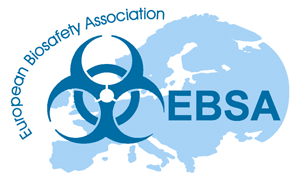About Pre conference course E. How to convince and influence for biosafety and security (1 day)
Pre conference course E. How to convince and influence for biosafety and security (1 day)
Instructors
Job Groeneweg and Anton de Paiva
For those who followed this course in Bucharest in 2019: some elements in this course will be new, whereas other parts may be a repetition. So repeating this course will not only refresh your recollection but also bring you something new!
Course description
When non-experts are asked to estimate a certain risk, there is a weak relation between the actual risks people run and the perception of these risks. Some diseases are sees as scary although the actual risk is relatively low (e.g. flesh-eating bacteria, ebola). On the other hand, there are diseases that seem to fly under the psychological radar of non-experts (e.g. tuberculosis). Organisations and governmental agencies that deal with high these infectious diseases have to realise that they have two manage both processes as they are almost mutually independent. Obviously, they have to initiate, execute and evaluate the effect interventions aimed at reducing the objective risks (make the world a safer place, free from infectious diseases). As important for projects to succeed: they need a dedicated communication program to influence the perception of the risk of infectious diseases. If it is necessary to change people’s behavior, it is essential to make them ‘see’ the risks. Unfortunately, in many cases the importance of these factors is underestimated. What can (governmental) organisations do to effectively shape the perception?
The course will include several individual and group activities (60% presentation, 40% interaction). The main objective is to give participants tools to influence the perception of risks.
Main topics
In this course the following topics will be addressed:
-
What are the various factors influencing risk perception?
-
What is the important role communication plays in shaping risk perception?
-
Why is a focus on the factual Content of information is not sufficient to change peoples’ perception but that a focus on the way it is communicated (Form) and the person / organisation (Source) crucial for shaping risk perception?
-
What are the most effective ways to manage Form and Source effectively?
-
How effective are the campaigns of the participants, what are tools for self-evaluation?
Learning outcomes
At he end of the course a trainee
- Has gained some knowledge, tools and experience to influence group culture and convincing their management
- Is aware of culture differences (personal and international)
- Knows ways to gain more knowledge and to learn further him/herself
CWA 16335:2011, annex C reference
- C 2.1.2.17 Communication skills
